Xue Fu
Few-Shot Specific Emitter Identification via Hybrid Data Augmentation and Deep Metric Learning
Dec 01, 2022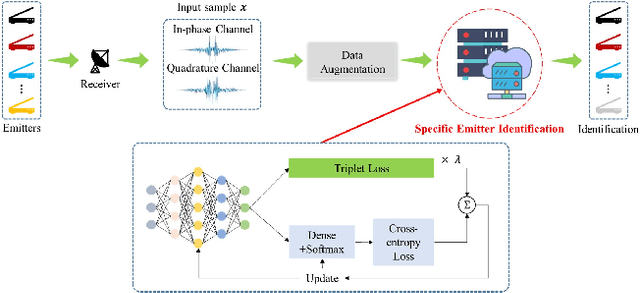
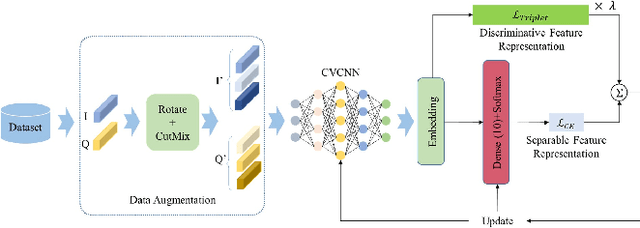
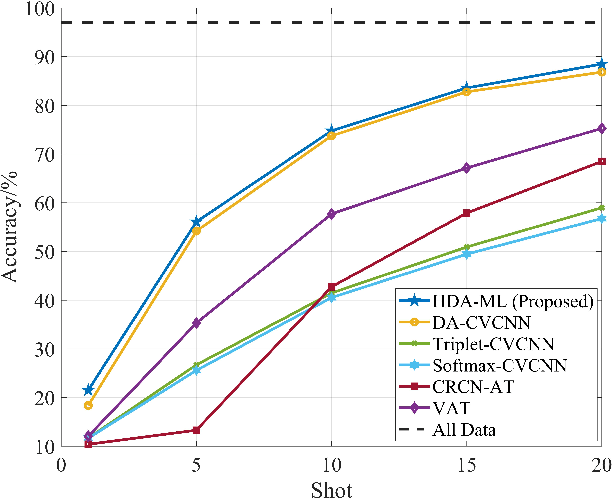
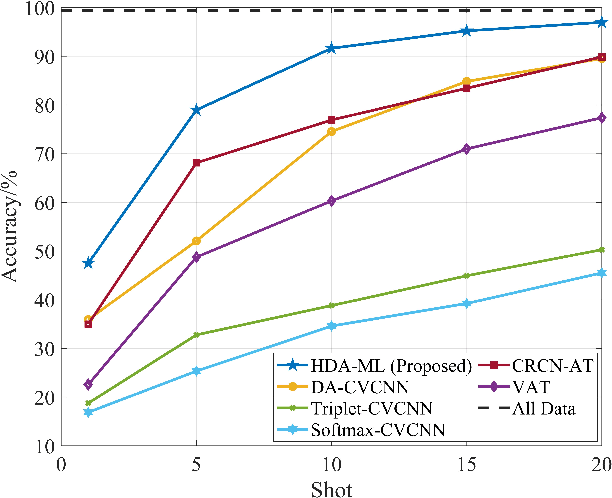
Abstract:Specific emitter identification (SEI) is a potential physical layer authentication technology, which is one of the most critical complements of upper layer authentication. Radio frequency fingerprint (RFF)-based SEI is to distinguish one emitter from each other by immutable RF characteristics from electronic components. Due to the powerful ability of deep learning (DL) to extract hidden features and perform classification, it can extract highly separative features from massive signal samples, thus enabling SEI. Considering the condition of limited training samples, we propose a novel few-shot SEI (FS-SEI) method based on hybrid data augmentation and deep metric learning (HDA-DML) which gets rid of the dependence on auxiliary datasets. Specifically, HDA consisting rotation and CutMix is designed to increase data diversity, and DML is used to extract high discriminative semantic features. The proposed HDA-DML-based FS-SEI method is evaluated on an open source large-scale real-world automatic-dependent surveillance-broadcast (ADS-B) dataset and a real-world WiFi dataset. The simulation results of two datasets show that the proposed method achieves better identification performance and higher feature discriminability than five latest FS-SEI methods.
Rogue Emitter Detection Using Hybrid Network of Denoising Autoencoder and Deep Metric Learning
Dec 01, 2022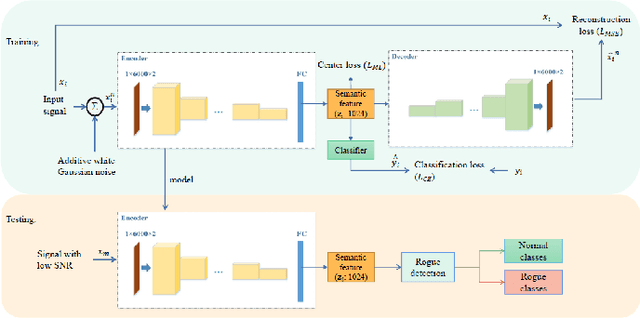
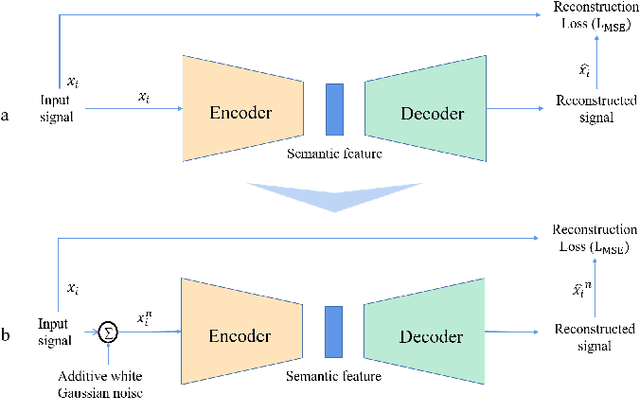
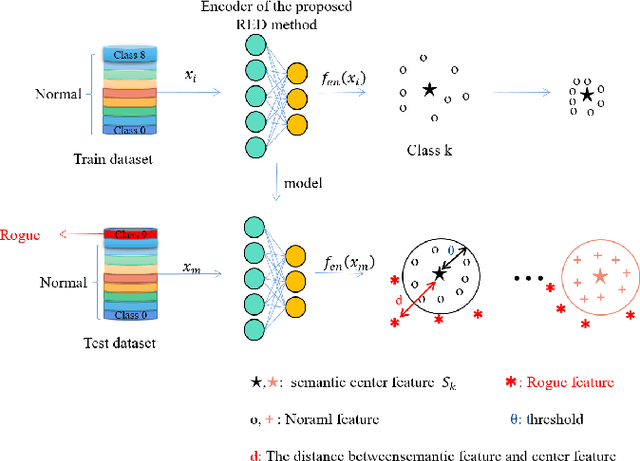
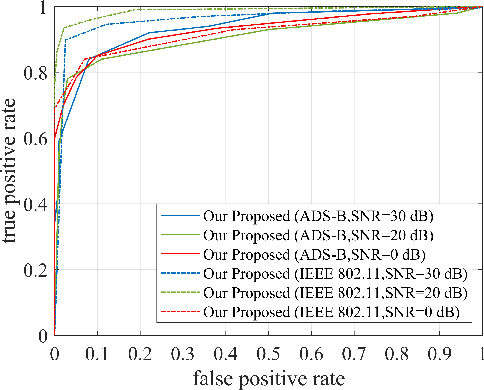
Abstract:Rogue emitter detection (RED) is a crucial technique to maintain secure internet of things applications. Existing deep learning-based RED methods have been proposed under the friendly environments. However, these methods perform unstable under low signal-to-noise ratio (SNR) scenarios. To address this problem, we propose a robust RED method, which is a hybrid network of denoising autoencoder and deep metric learning (DML). Specifically, denoising autoencoder is adopted to mitigate noise interference and then improve its robustness under low SNR while DML plays an important role to improve the feature discrimination. Several typical experiments are conducted to evaluate the proposed RED method on an automatic dependent surveillance-Broadcast dataset and an IEEE 802.11 dataset and also to compare it with existing RED methods. Simulation results show that the proposed method achieves better RED performance and higher noise robustness with more discriminative semantic vectors than existing methods.
Semi-Supervised Specific Emitter Identification Method Using Metric-Adversarial Training
Nov 28, 2022



Abstract:Specific emitter identification (SEI) plays an increasingly crucial and potential role in both military and civilian scenarios. It refers to a process to discriminate individual emitters from each other by analyzing extracted characteristics from given radio signals. Deep learning (DL) and deep neural networks (DNNs) can learn the hidden features of data and build the classifier automatically for decision making, which have been widely used in the SEI research. Considering the insufficiently labeled training samples and large unlabeled training samples, semi-supervised learning-based SEI (SS-SEI) methods have been proposed. However, there are few SS-SEI methods focusing on extracting the discriminative and generalized semantic features of radio signals. In this paper, we propose an SS-SEI method using metric-adversarial training (MAT). Specifically, pseudo labels are innovatively introduced into metric learning to enable semi-supervised metric learning (SSML), and an objective function alternatively regularized by SSML and virtual adversarial training (VAT) is designed to extract discriminative and generalized semantic features of radio signals. The proposed MAT-based SS-SEI method is evaluated on an open-source large-scale real-world automatic-dependent surveillance-broadcast (ADS-B) dataset and WiFi dataset and is compared with state-of-the-art methods. The simulation results show that the proposed method achieves better identification performance than existing state-of-the-art methods. Specifically, when the ratio of the number of labeled training samples to the number of all training samples is 10\%, the identification accuracy is 84.80\% under the ADS-B dataset and 80.70\% under the WiFi dataset. Our code can be downloaded from https://github.com/lovelymimola/MAT-based-SS-SEI.
 Add to Chrome
Add to Chrome Add to Firefox
Add to Firefox Add to Edge
Add to Edge